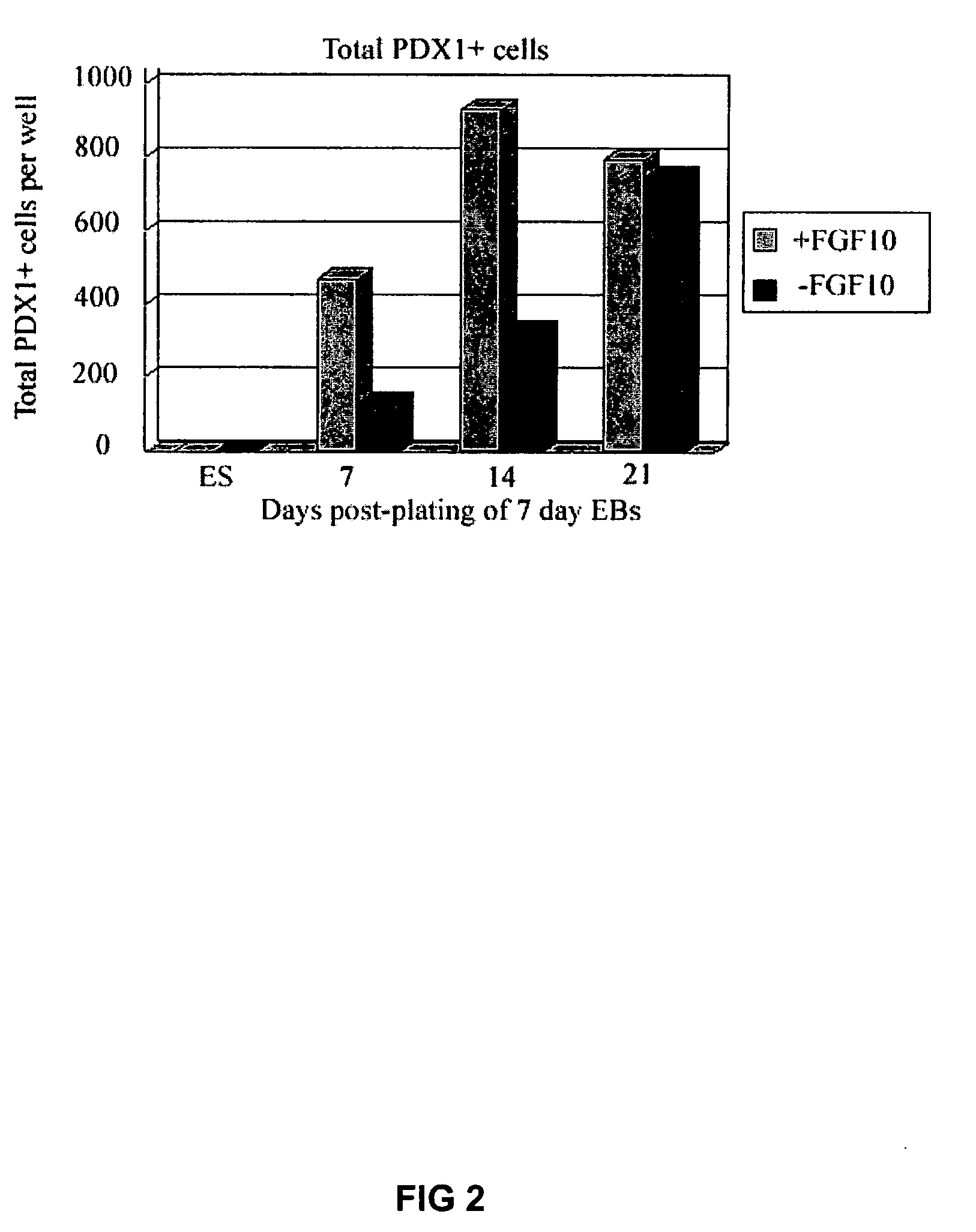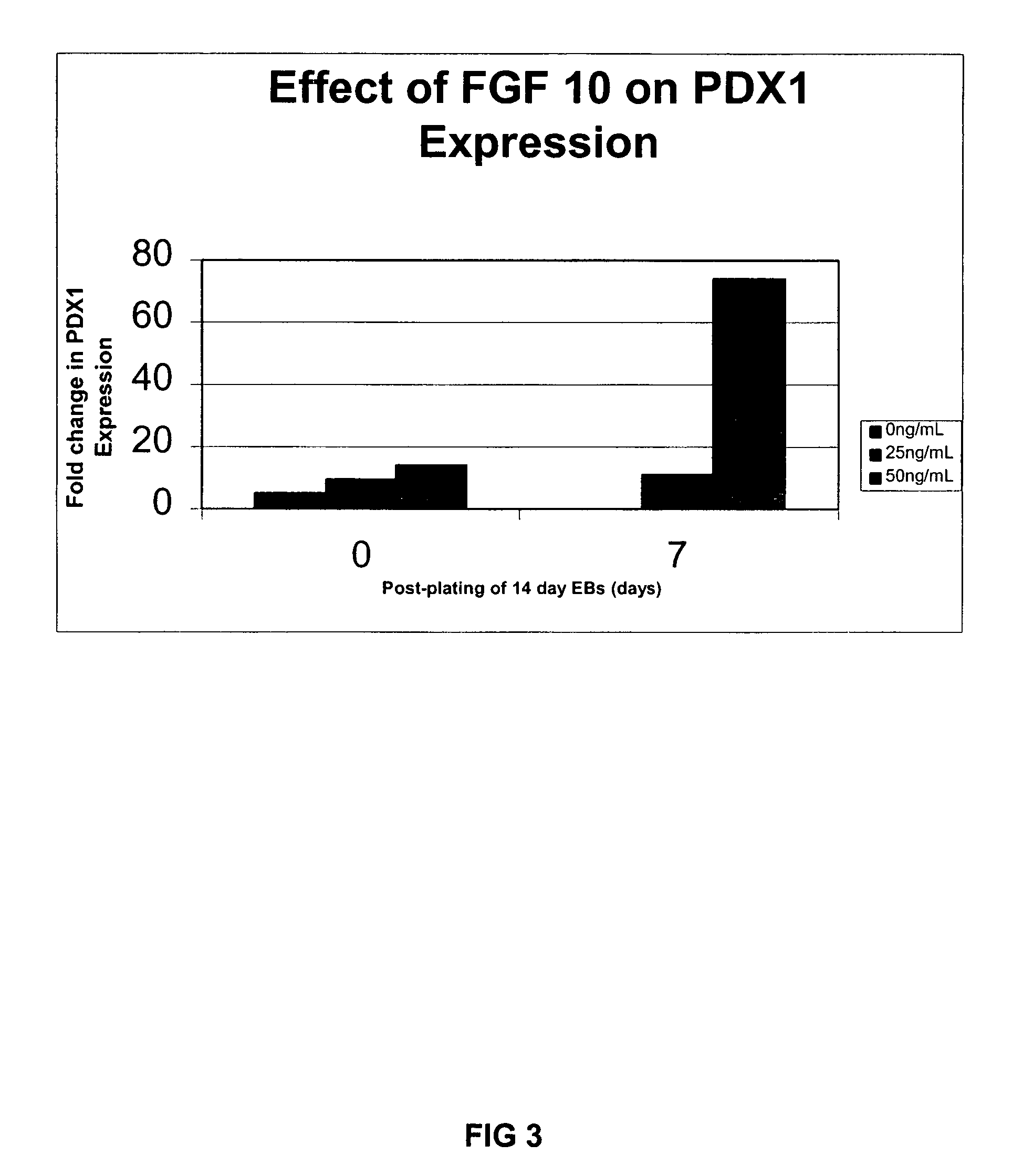Differentiation of stem cells to endoderm and pancreatic lineage
a technology of pancreatic lineage and stem cells, which is applied in the field of differentiation of stem cells to endoderm and pancreatic lineage, can solve the problems of extremely limited amount of islet cells which can be harvested from human cadavers, and restricts this therapy
- Summary
- Abstract
- Description
- Claims
- Application Information
AI Technical Summary
Benefits of technology
Problems solved by technology
Method used
Image
Examples
examples
[0025]General Culture Conditions:
[0026]Undifferentiated murine ES cells were grown in DMEM-High Glucose medium supplemented with 15% FCS, L-glutamine, NEAA (non-essential amino acids), mercaptoethanol (MES medium) and LIF on irradiated feeder cells as described previously (Kahan et al., 2003). To produce EBs, ES cell monolayers were treated with 2 mM EDTA with 2% chicken serum for 15 min. Cells were resuspended in MES medium and filtered though a 20 μm Nitex filter to obtain a single cell suspension. 2×106 cells were placed in a siliconized non-tissue culture P60 dish in 5 ml MES medium in 10% CO2. Cultures were renewed daily and split into larger dishes to prevent medium acidification. 7-day EBs were collected, counted and placed at a density of 30-50 EBs in 24 well plates containing 13 mm glass gelatin-coated coverslips for immunohistochemical staining, or in proportionately larger numbers in gelatinized tissue culture dishes for other analyses including quantitative PCR (QPCR). E...
PUM
| Property | Measurement | Unit |
|---|---|---|
| concentration | aaaaa | aaaaa |
| size | aaaaa | aaaaa |
| cell surface | aaaaa | aaaaa |
Abstract
Description
Claims
Application Information
 Login to View More
Login to View More - R&D
- Intellectual Property
- Life Sciences
- Materials
- Tech Scout
- Unparalleled Data Quality
- Higher Quality Content
- 60% Fewer Hallucinations
Browse by: Latest US Patents, China's latest patents, Technical Efficacy Thesaurus, Application Domain, Technology Topic, Popular Technical Reports.
© 2025 PatSnap. All rights reserved.Legal|Privacy policy|Modern Slavery Act Transparency Statement|Sitemap|About US| Contact US: help@patsnap.com



